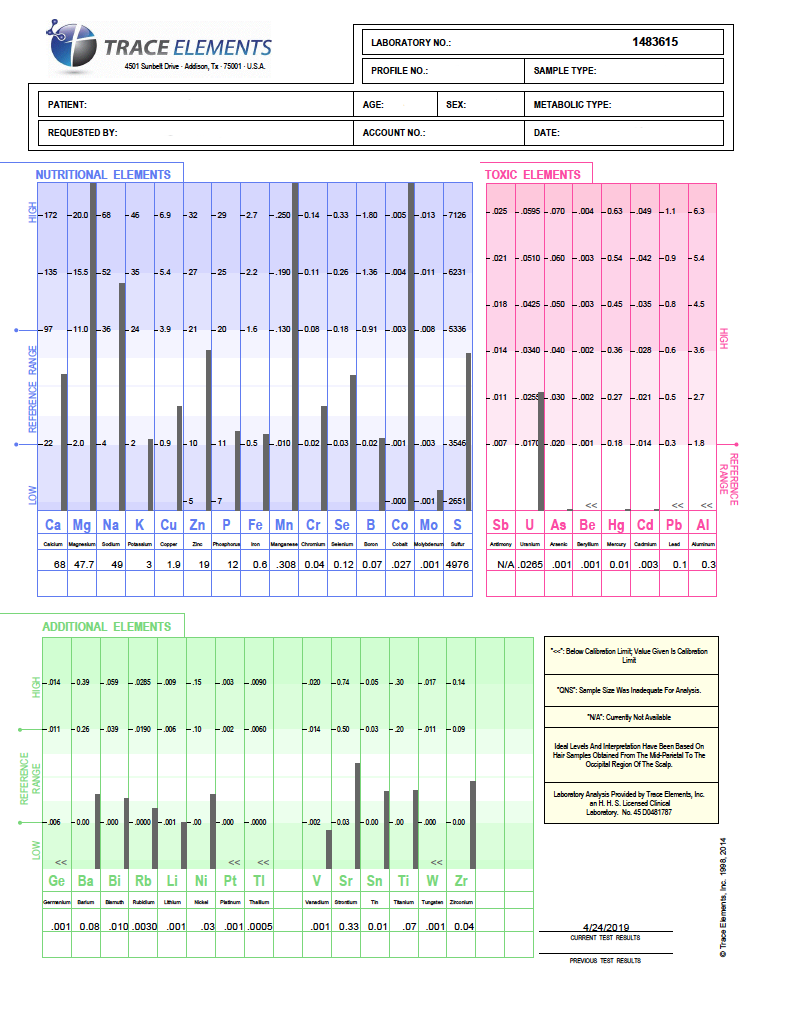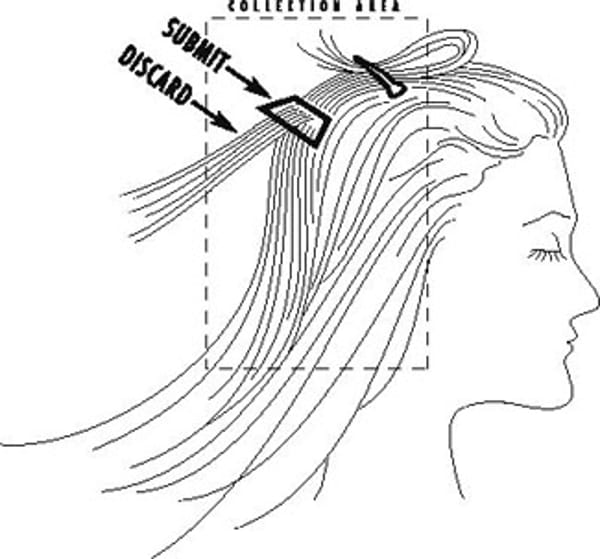
Hair Tissue Mineral Analysis + 60 Minutes Consultation
Nutritional minerals and toxic metals analysis
$315.00$295.00
Hair Tissue Mineral Analysis (HTMA) is a non-invasive laboratory test that measures the mineral content of hair to assess the body's nutritional and metabolic health. HTMA provides insights into essential mineral levels, toxic metal exposure, and metabolic patterns that cannot be observed through standard blood tests. Hair is an ideal tissue for analysis because it reflects long-term mineral storage and metabolic activity over time, offering a broader perspective than a snapshot blood test.
HTMA can reveal nutrient imbalances, heavy metal accumulation, and mineral ratios critical for cellular function, which play a key role in energy production, stress response, and overall health. The test helps identify metabolic types, guiding personalized dietary and supplement recommendations to optimize energy levels and biochemical balance. HTMA also provides a valuable blueprint for understanding how environmental factors, stress, and lifestyle choices impact mineral status.
Hair samples are processed accurately and reliably through advanced techniques in a certified laboratory. This comprehensive analysis empowers individuals to address root causes of health concerns and supports proactive, personalized wellness strategies.
No refund.

Scalp hair is the only source recommended for analysis. Pubic and other body hair should only be used as a last resort if scalp hair is not available.
Note: Pubic and other body hair is only recommended for confirmation of elevated toxic metals found in the scalp hair and/or to rule out external contamination of the scalp hair.
The portion of hair to be collected should be untreated, i.e. not permed, dyed or bleached. If all of the hair has been chemically treated, wait until sufficient new virgin growth has emerged to allow collection. The hair should also be free of all gels, oils and hair creams prior to sample collection. For those individuals environmentally and/or occupationally exposed to external contaminants, (welding, mining, etc...) special care should be taken to limit exposure between washing of the hair and the collection of the sampled hair.
Each collected sample should be taken in small portions from at least four to five different locations of the scalp. The recommended areas for collection are the nape of the neck, posterior vertex and posterior temporal regions.
Note: All reference range correlations, dietary recommendations and interpretive report content assumes that the complete hair specimen originated solely from the above defined regions of the scalp.
High grade stainless steel scissors or thinning shears should be used to cut the hair as close to the scalp as possible. The length of the collected hair should not exceed one and one-half inches. The proximal portion (one and one-half inches closest to the root) should be retained and the excess discarded.
Note: The proximal portion is reflective of the most recent metabolic activity.
